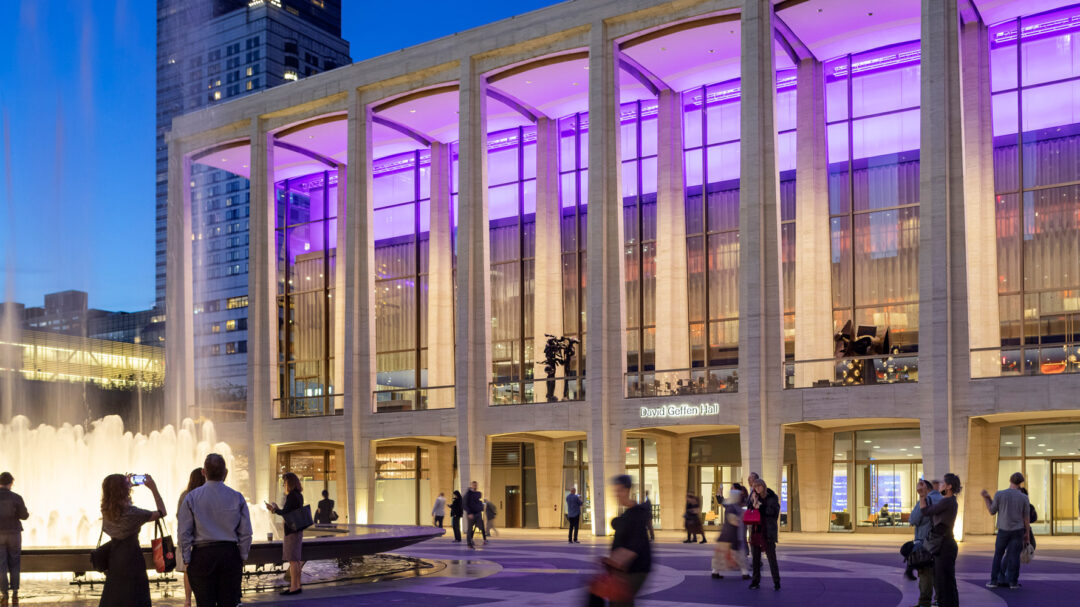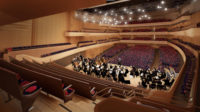The audience for the inaugural public concerts at the overhauled David Geffen Hall at New York’s Lincoln Center passed through a raised garage-style glass door and—instead of what had been a cramped, beige lobby—entered a soigné space, twice as large, furnished with serpentine couches and club chairs upholstered in orange, chartreuse, and bold stripes. Beyond this relaxed seating area, a digital artwork, entitled, “An Eclectic Dance to the Music of Time,” by artist Jacolby Satterwhite, played on a 50-foot wide high-definition video screen.
Lincoln Center, and the New York Philharmonic, its tenant, undertook this daunting $550-million gut renovation primarily to remedy the acoustic shortcomings of its auditorium, which had defeated the efforts of architects and consultants for decades. These welcoming architectural alterations suggest how radically the latest design team—Diamond Schmitt and Tod Williams Billie Tsien Architects—has transformed the entire concert-hall experience.
The 1962 classically proportioned glass box, fronted by a portico of tapering travertine columns, designed by Harrison & Abramovitz remains unchanged. Inside, however, Tod Williams and Billie Tsien, responsible for all of the spaces outside the auditorium, doubled the size of the lobby, and removed a pair of escalators that had impeded circulation. They moved the box office that had confronted patrons just inside the entrance to a high visibility corner location near the street. This new “welcome center,” complete with coffee bar, sells tickets, offers information, and aspires to attract newbies to Lincoln Center.
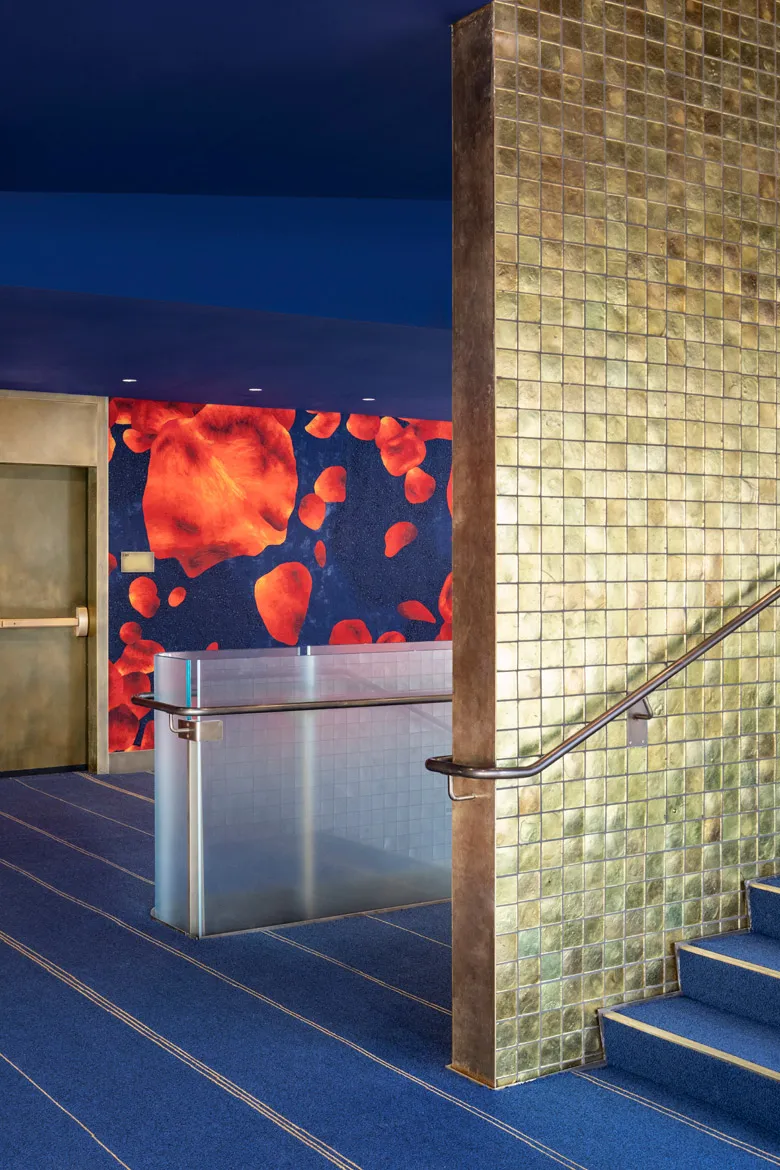
From the Grand Promenade, two ornamental stairs on either side are clad with Italian glass tiles. On one side is yellow gold leaf, on the other an antique white gold. Photography © Michael Moran
Upstairs, the three concourse levels, once colorless, now envelope patrons in deep cobalt, with frosted-glass railings that pick up the glow of the textured blue wall-covering scattered with what Tsien calls oversized “falling flower petals” in shades of red, fuchsia, and orange. Expanded and reconfigured, these spaces not only build anticipation in contrast to the neutral lobbies that preceded them, they also untangle long-time circulation bottlenecks.
In contrast to the buoyant work of Williams and Tsien, the auditorium redesign, led by Diamond Schmitt principal Gary McCluskie following the dictates of sound consultant Akustics, expresses a restrained yet warm purposefulness. The stage has been thrust forward 25 feet into the audience and the hall has 500 fewer seats (2,200), which aids both the acoustics and the closeness of the audience to the performers.
Rebuilt within the original envelope, it replaces the austere 1976 renovation by Philip Johnson with acoustician Cyril Harris, a rigidly rectangular “shoebox” in sober grey plaster. Though it emulated many of the world’s admired halls, the Johnson-Harris design as executed contributed greatly to the estrangement between players and listeners. The most common complaint was that musicians seemed to be playing in a separate room. The side walls of Diamond Schmitt’s reconfigured hall gently bulge outward, clad largely in rippling panels of beechwood attached to a solid substrate, instead of the airspace that existed, and which reduced bass response. Ribbonlike balconies, faceted to scatter sound, curve around the sides of the stage to meet seven rows of seats behind it.
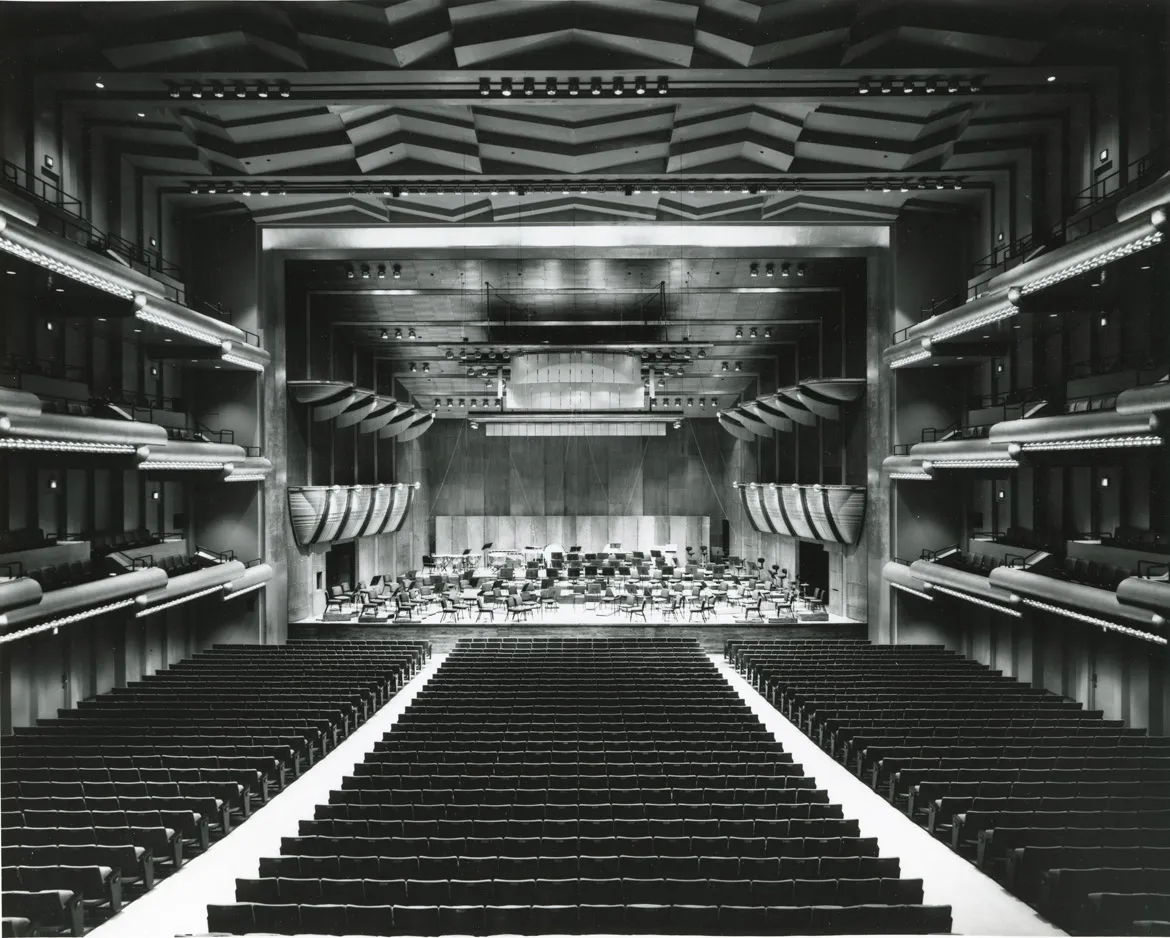
The 1976 Philip Johnson revamp of the then-Avery Fisher Hall in 1992 after an acoustic enhancement to the stage. Sandor Acs/New York Philharmonic, courtesy of the New York Philharmonic Shelby White & Leon Levy Digital Archives
Early reviews were positive, with critics describing a new wealth of instrumental intensity, detail, color, and timbre. Given the many previous critical raves the hall received in past renovations before the substandard reality set in, critics were wary. Justin Davidson, in New York magazine, wrote, “The results from the first noises were provisionally encouraging and firmly inconclusive.” Writing in the New York Times, Zachary Woolfe was relieved to find the hall “mightily improved,” yet feared that it was marred by “an objective, almost clinical feeling.” He noted that the sound was consistent throughout the hall (a rarity even in the best halls), whether in the rear balconies where the hall’s resonance most noticeably kicks in or at the sides, from the newly created seats around the stage, where listeners exchange limited views for an exciting closeness to the players.
The Philharmonic made a daring choice in commissioning “San Juan Hill: A New York Story,” a 90-minute work from jazz trumpeter and composer Etienne Charles for the first public concerts. His sextet Creole Soul presided downstage surrounded by the orchestra—all below a large retractable movie screen. Accompanied by a documentary-style film, the piece sped through several musical styles to remind the audience of the rich cultural and musical life of the thousands of largely Black and Puerto Rican families who were displaced by the building of Lincoln Center.
The presentation also demonstrated a greater use of theatrical lighting, improved amplified sound, and video technology in what had been a temple to un-enhanced instruments. David Geffen Hall is embracing these technologies, given its ambition to broaden its repertoire and appeal.
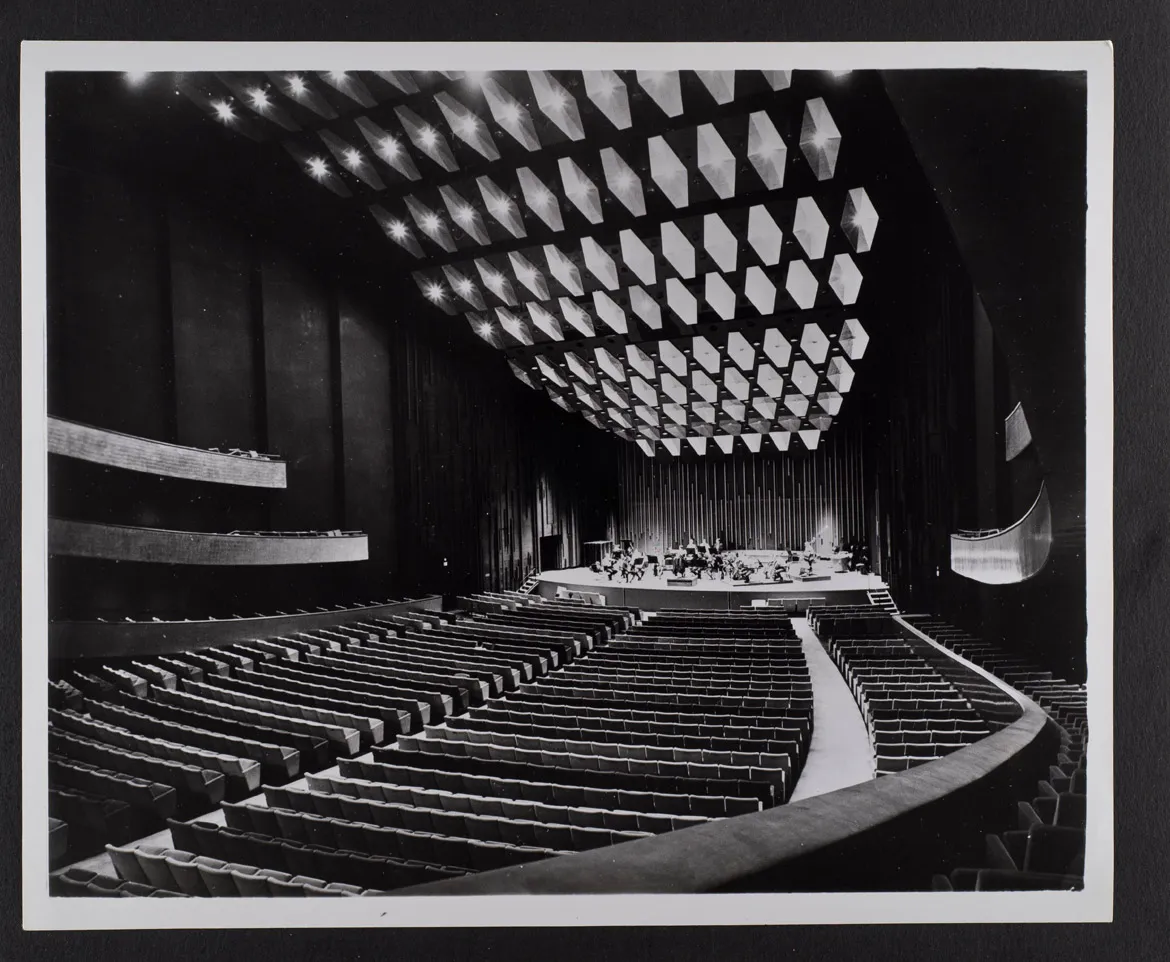
. The then-Philharmonic Hall by Harrison & Abramowitz in 1963, a year after it opened in 1962. Photography by Bob Serating, courtesy of the New York Philharmonic Shelby White & Leon Levy Digital Archives
An ebullient and diverse audience gave Charles a thunderous ovation and crowded excitedly into the orchestra-level lobby afterward (supplied with inviting and ample bars by Williams and Tsien), suggesting that the hall was welcoming the very audiences that had been put off by programs that weren’t inclusive, uninspired sound, and esthetic austerity. Critics, players, and audiences are not finding glaring flaws—as they did when Geffen opened in 1962 as Philharmonic Hall. It may take months or longer for a consensus to form about whether the experience delivers the world-class excellence that Lincoln Center hoped it was buying.
